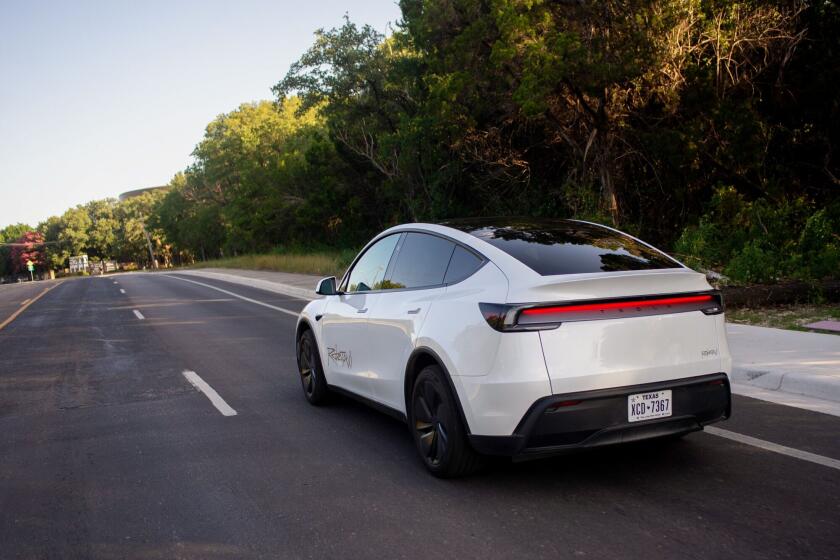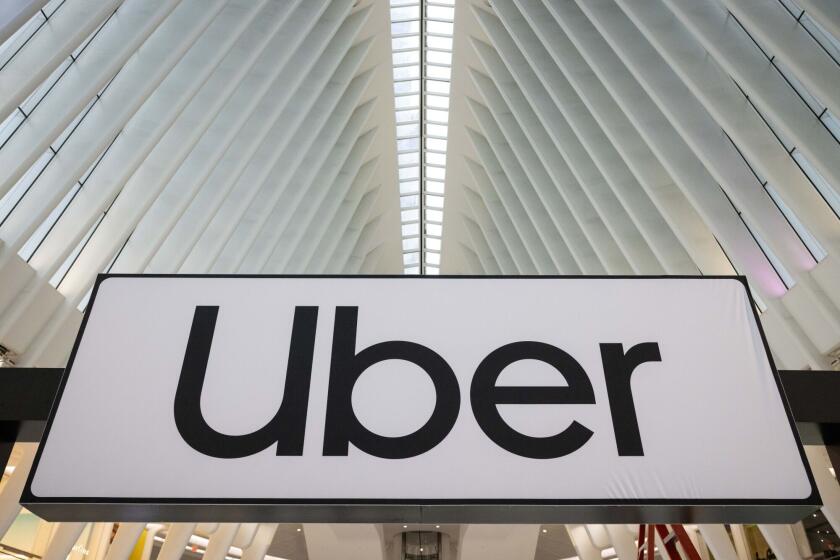Screeners at LAX miss 75% of ‘bombs’
- Share via
Passengers at Los Angeles International Airport are used to the hassles that come with heightened security: long lines, removing shoes and belts and leaving liquids behind.
But they learned Thursday that despite all these precautions, security screeners missed 75% of fake bombs and explosives that passed through the airport during undercover terrorism drills.
Citing a classified memo, USA Today reported that Chicago’s O’Hare International Airport fared slightly better than LAX, failing to detect about 60% of the simulated bombs, and San Francisco International missed 20%.
“They almost undress you in there, and they can’t get their stuff straight,” said Huntington Park resident Maria Gonzales, 32, as she prepared to catch a flight Thursday morning from LAX to Las Vegas.
Transportation Security Administration officials would not confirm or deny details of the newspaper report. But they defended the screeners, saying the tests were conducted two years ago and were designed to trip up security personnel.
Whenever the pass rate gets too high, TSA reconfigures the exams to make them more difficult, using different devices, said agency spokesman Nico Melendez.
“People have the misconception that these are like sticks of dynamite,” he said of the simulated detonators. “These are more like caps on a pen . . . a piece of metal with a wire in it.
“It takes real skill to look and find that,” Melendez said. “This is an extreme effort on our part to keep our people up to date on the threats and how to thwart those threats.”
The TSA conducts 20,000 tests a week nationwide, meaning each of its 43,000 employees, including 2,000 at LAX, gets tested about every two weeks, Melendez said.
Based on the LAX test results from two years ago, Melendez said the amount of training screeners receive increased from three to four hours a week, with a special focus on detecting improvised explosive devices.
He said screeners who consistently perform poorly are removed and placed in remedial training until their scores improve.
If they attend multiple training sessions, he said, it goes on their record and is considered at their annual recertification.
Airport officials said privately that they were not alarmed by the newspaper report.
“We understand how the TSA’s aggressive and increasingly difficult testing program identifies vulnerable areas and results in a safer aviation system,” said one official.
But that didn’t provide much comfort to travelers.
“You would expect LAX, given the amount of flights that come through here, would be more spot on,” said Daren Doss, 39, an architect from Seattle waiting at the airport Thursday with his wife and infant daughter.
Doss said they were visiting his parents in Pacific Palisades and missed a morning flight because of long security lines, even though he noticed extra TSA screeners standing nearby, laughing and joking.
“There could have been more stations set up,” he said. “They didn’t seem to take their job too seriously.”
Carla Brown, 37, called the report “scary.”
“It means anybody can walk in with an explosive device in their bag,” said Brown, who was on her way to Charleston, W.Va., with her family.
“It’s nerve-racking when you fly anyway, especially since 9/11,” she said. “I’m sure it gets boring all day long, but they have to stay on top of it.”
Dave Stone, the former federal security director at LAX and one-time head of the TSA, said the airport is particularly vulnerable because of its size.
In addition to passengers, screeners check more than 150,000 pieces of baggage each day, by far the most in the nation.
“The testing program should be designed to break the system,” Stone said. “I spent a lot of time trying to have testing scenarios that exploit the vulnerability and gaps that we had at the passenger checkpoint. So therefore you would have failure rates that were relatively high.”
Stone said there are at least three steps authorities could continue to take to improve those numbers: purchase more advanced screening equipment, fund the proper number of screeners at each airport and ensure that screeners who consistently fail covert tests are removed.
But Jack Keady, a Playa del Rey-based aviation consultant, said airport security officials may be on the wrong track when it comes to catching terrorists.
“If you make anything innocuous-looking enough, you can usually get by,” Keady said. “Because the only screening method they have is looking through the TV screen.”
Keady said random searches may be one of the best ways to catch terrorists.
Currently, a designation of a passenger as “4S” means they are subject to a random search. He suggested random secondary checks at boarding gates before takeoff.
molly.hennessy-fiske@ latimes.com
More to Read
Sign up for Essential California
The most important California stories and recommendations in your inbox every morning.
You may occasionally receive promotional content from the Los Angeles Times.














